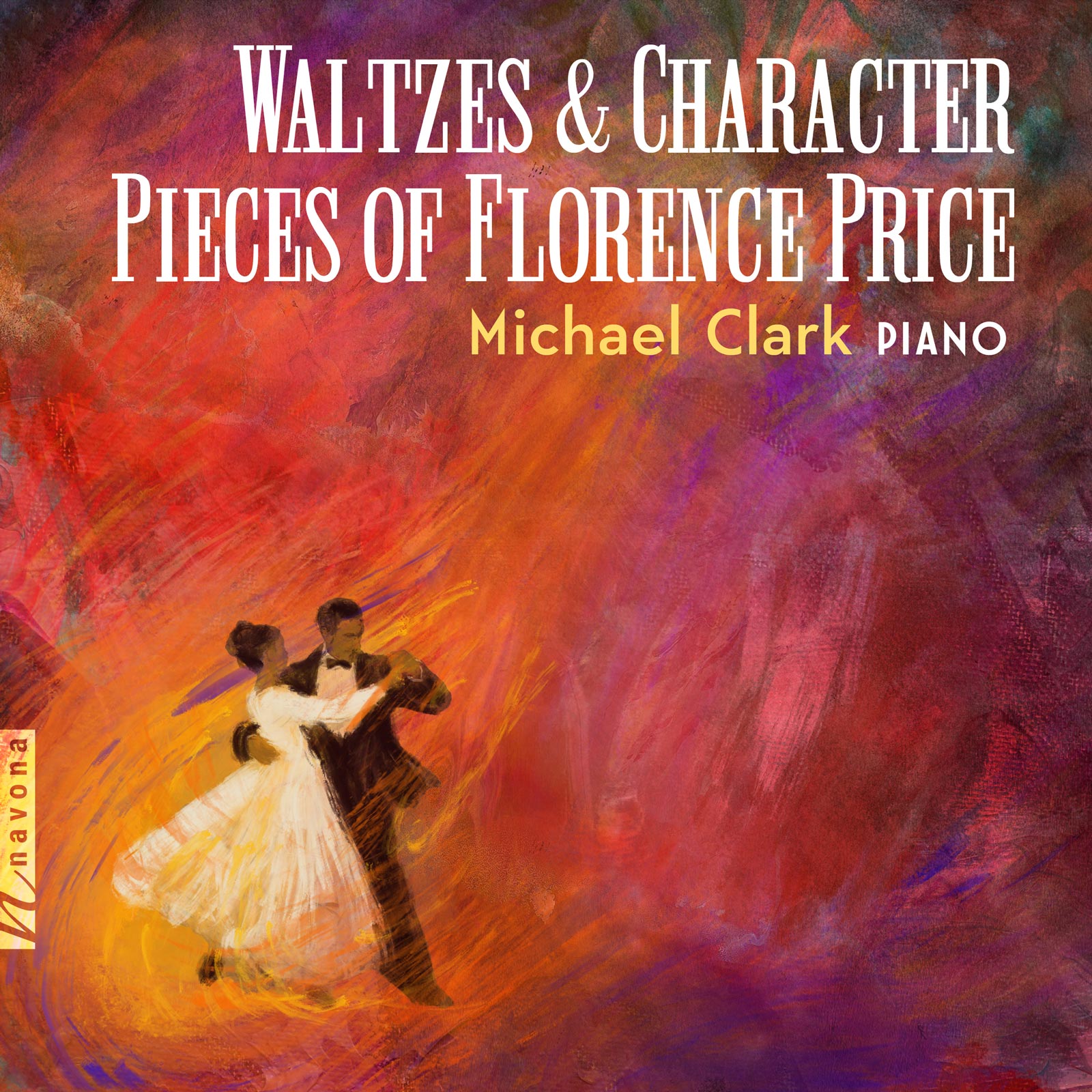Waltzes & Character Pieces of Florence Price
Florence Price composer
Michael Clark piano
Michael Clark’s knowledge and reverence for Florence Price shines in WALTZES & CHARACTER PIECES OF FLORENCE PRICE. Opening with the first waltz in Price’s musical catalog, Valsette Mignon, and closing with one of her final waltzes, Waltzing on a Sunbeam, Clark’s respect and intimate understanding of these elegant piano works is evident in his delicate treatment of each passage down to the single note. The sheer musicality Clark presents in the rolling melodic line of character pieces such as Dreamboat and Barcarolle honors Price’s work in a way that both uplifts and exceeds expectations. Clark hopes that the fragment of her vast repertoire showcased in WALTZES & CHARACTER PIECES OF FLORENCE PRICE will implore listeners to further explore her works, continuing to give Price her long overdue flowers.
Listen
Stream/Buy
Choose your platform
Track Listing & Credits
| # | Title | Composer | Performer | |
|---|---|---|---|---|
| 01 | Valsette Mignon | Florence Price | Michael Clark, piano | 2:13 |
| 02 | Impromptu No. 1 | Florence Price | Michael Clark, piano | 2:09 |
| 03 | Barcarolle | Florence Price | Michael Clark, piano | 4:12 |
| 04 | Hilda's Waltz | Florence Price | Michael Clark, piano | 2:48 |
| 05 | Waltz of the Spring Maid | Florence Price | Michael Clark, piano | 3:57 |
| 06 | Scherzo in G Major | Florence Price | Michael Clark, piano | 2:10 |
| 07 | Rowing: Little Concert Waltz | Florence Price | Michael Clark, piano | 2:01 |
| 08 | In Sentimental Mood | Florence Price | Michael Clark, piano | 2:04 |
| 09 | Summertime Waltz (Waltz Charming) | Florence Price | Michael Clark, piano | 3:03 |
| 10 | Dream Boat | Florence Price | Michael Clark, piano | 1:51 |
| 11 | Rainbow Waltz | Florence Price | Michael Clark, piano | 2:45 |
| 12 | Clouds | Florence Price | Michael Clark, piano | 5:27 |
| 13 | Pensive Mood | Florence Price | Michael Clark, piano | 3:22 |
| 14 | Whirlaway Waltz | Florence Price | Michael Clark, piano | 1:57 |
| 15 | To a Yellow Rose | Florence Price | Michael Clark, piano | 3:03 |
| 16 | To a White Rose | Florence Price | Michael Clark, piano | 2:51 |
| 17 | To a Red Rose | Florence Price | Michael Clark, piano | 2:10 |
| 18 | Cherry Blossoms in Her Hair (Debutante Waltz) | Florence Price | Michael Clark, piano | 4:23 |
| 19 | Waltzing on a Sunbeam | Florence Price | Michael Clark, piano | 2:50 |
Recorded July 22–23, 2023 at Dudley Recital Hall at the University of Houston in Houston TX
Recording Session Producers Michael Clark, Todd Hulslander
Recording Session Engineers Todd Hulslander, Mark DiClaudio
Executive Producer Bob Lord
VP of A&R Brandon MacNeil
A&R Danielle Sullivan
VP of Production Jan Košulič
Audio Director Lucas Paquette
VP, Design & Marketing Brett Picknell
Art Director Ryan Harrison
Design Edward A. Fleming
Publicity Kacie Brown
Artist Information

Michael Clark
Michael Clark is a pianist devoted to the interconnection of performance, scholarship, and pedagogy. He has appeared in 15 U.S. states as a soloist, chamber musician, and clinician, specializing in 20th and 21st century repertoire. An advocate for the music of Florence Price, Clark has presented numerous lecture recitals on her piano works and made his solo album debut with Price’s complete waltzes and selected character pieces for Navona Records.

